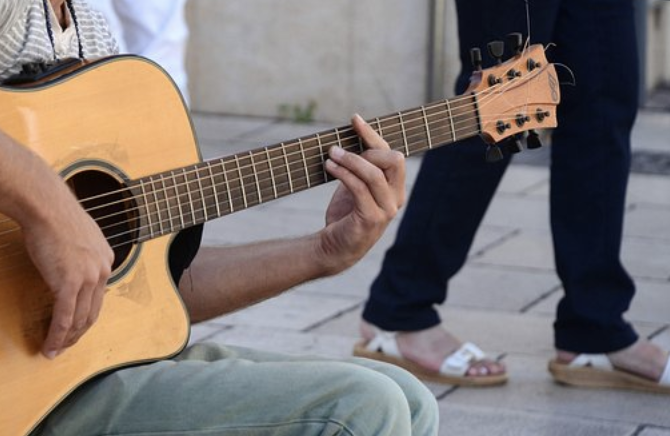You try to get the lyrics down as quickly as possible whenever you hear a new song on the radio. But have you ever thought about writing your song? Writing your songs can be a fun and fulfilling creative outlet, but it can also seem intimidating if you don’t know where to start. However, anyone can learn how to compose their songs with guidance and practice. So if you have ever wanted to try songwriting, read on.
1. Attend Music Class
Attending music class is one of the best ways to learn how to compose your songs. Music class will give you a basic foundation in music theory, which will help you understand how songs are put together. The online music teacher at https://mymusicteachersonline.com/ teaches about different instruments and their sounds, which can be helpful when it comes time to start writing your melodies. In addition, most music classes include opportunities for students to perform, so you’ll get some experience sharing your work with others. If possible, try to find a class taught by a professional songwriter – they can offer valuable tips and advice.
2. Start by Brainstorming Ideas or Themes for Your Song
When composing your songs, one of the best things you can do is start by brainstorming ideas or themes for your song. This will help you better understand what you want to say and how you want to say it. It can also help you develop melodies and lyrics that fit together well.
There are a few different ways to go about brainstorming song ideas. One way is to think about topics or subjects that interest you or that you feel strongly about. Another way is to create a melody or riff and then build a song around that melody. You can also develop a title for your song and then work backward, developing the story or theme that goes along with it.
3. Come Up With Some Basic Chords and Melodies
One of the best ways to start learning how to compose your songs is by learning some basic chords and melodies. This will give you a foundation on which to build more complex songs. A chord progression is simply a series of chords played one after the other. You can develop your chord progressions or use ones you find online or in books.
Once you have some chords in mind, start playing around with melodies. You can use the chords as a guide and see what kind of melody naturally fits with them. Or, if you already have a melody in mind, play around with different chords until you find ones that fit well with it. Don’t be afraid to experiment – try out different chord progressions or melodies until you find something that sounds good.
4. Write Your Lyrics
Once you have some basic chords and melodies, it’s time to start writing your lyrics. This is where brainstorming ideas or themes can come in handy – it can help give you direction for your lyrics and make the writing process easier. As you write, think about how your lyrics fit with the melody and chord progression. It can also be helpful to listen to songs that inspire you or have a similar feel to what you are trying to create.
When writing lyrics, it’s essential to focus on clarity and communication. Your listeners should be able to understand what you’re saying and connect with the emotions behind your words. Don’t be afraid to revise your lyrics as needed – sometimes, it takes a few drafts before they feel just right.
5. Experiment With Different Instruments and Sounds
One of the great things about composing your songs is that you have the freedom to experiment with different instruments and sounds. This can add depth and texture to your music, making it more unique and interesting. Try out other instruments or even record sounds from everyday objects and incorporate them into your composition. Don’t be afraid to try something new – you never know what kind of creative ideas it might inspire.
6. Practice and Polish Your Song
Once you have a rough composition draft, it’s time to start practicing and polishing it. This can involve rehearsing with any musicians you may be working with and making any adjustments or revisions to the chords, melody, lyrics, or overall structure of the song. It’s essential to take the time to practice and perfect your composition before sharing it with others.
You may also want to consider recording your song – this can help you hear any areas that need improvement and give you something to share with friends and family or potentially even pursue professional opportunities.
Composing your songs can be a fun and rewarding experience. By following these steps and being open to experimentation and revision, you can create unique and personal compositions that will impress listeners. So grab your instrument and get started on your songwriting journey today.


You try to get the lyrics down as quickly as possible whenever you hear a new song on the radio. But have you ever thought about writing your song? Writing your songs can be a fun and fulfilling creative outlet, but it can also seem intimidating if you don’t know where to start. However, anyone can learn how to compose their songs with guidance and practice. So if you have ever wanted to try songwriting, read on.
1. Attend Music Class
Attending music class is one of the best ways to learn how to compose your songs. Music class will give you a basic foundation in music theory, which will help you understand how songs are put together. The online music teacher at https://mymusicteachersonline.com/ teaches about different instruments and their sounds, which can be helpful when it comes time to start writing your melodies. In addition, most music classes include opportunities for students to perform, so you’ll get some experience sharing your work with others. If possible, try to find a class taught by a professional songwriter – they can offer valuable tips and advice.
2. Start by Brainstorming Ideas or Themes for Your Song
When composing your songs, one of the best things you can do is start by brainstorming ideas or themes for your song. This will help you better understand what you want to say and how you want to say it. It can also help you develop melodies and lyrics that fit together well.
There are a few different ways to go about brainstorming song ideas. One way is to think about topics or subjects that interest you or that you feel strongly about. Another way is to create a melody or riff and then build a song around that melody. You can also develop a title for your song and then work backward, developing the story or theme that goes along with it.
3. Come Up With Some Basic Chords and Melodies
One of the best ways to start learning how to compose your songs is by learning some basic chords and melodies. This will give you a foundation on which to build more complex songs. A chord progression is simply a series of chords played one after the other. You can develop your chord progressions or use ones you find online or in books.
Once you have some chords in mind, start playing around with melodies. You can use the chords as a guide and see what kind of melody naturally fits with them. Or, if you already have a melody in mind, play around with different chords until you find ones that fit well with it. Don’t be afraid to experiment – try out different chord progressions or melodies until you find something that sounds good.
4. Write Your Lyrics
Once you have some basic chords and melodies, it’s time to start writing your lyrics. This is where brainstorming ideas or themes can come in handy – it can help give you direction for your lyrics and make the writing process easier. As you write, think about how your lyrics fit with the melody and chord progression. It can also be helpful to listen to songs that inspire you or have a similar feel to what you are trying to create.
When writing lyrics, it’s essential to focus on clarity and communication. Your listeners should be able to understand what you’re saying and connect with the emotions behind your words. Don’t be afraid to revise your lyrics as needed – sometimes, it takes a few drafts before they feel just right.
5. Experiment With Different Instruments and Sounds
One of the great things about composing your songs is that you have the freedom to experiment with different instruments and sounds. This can add depth and texture to your music, making it more unique and interesting. Try out other instruments or even record sounds from everyday objects and incorporate them into your composition. Don’t be afraid to try something new – you never know what kind of creative ideas it might inspire.
6. Practice and Polish Your Song
Once you have a rough composition draft, it’s time to start practicing and polishing it. This can involve rehearsing with any musicians you may be working with and making any adjustments or revisions to the chords, melody, lyrics, or overall structure of the song. It’s essential to take the time to practice and perfect your composition before sharing it with others.
You may also want to consider recording your song – this can help you hear any areas that need improvement and give you something to share with friends and family or potentially even pursue professional opportunities.
Composing your songs can be a fun and rewarding experience. By following these steps and being open to experimentation and revision, you can create unique and personal compositions that will impress listeners. So grab your instrument and get started on your songwriting journey today.
Related Content: